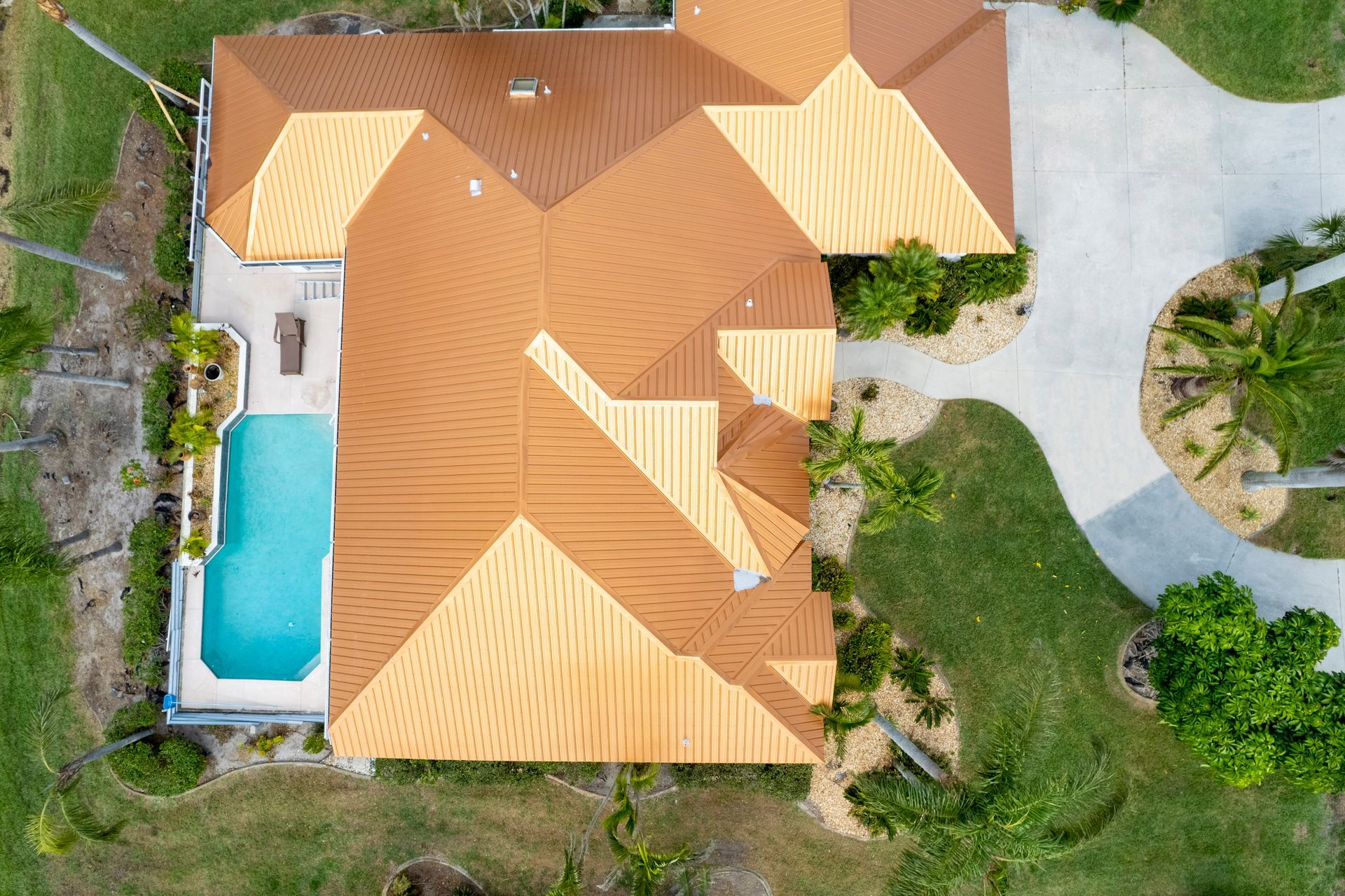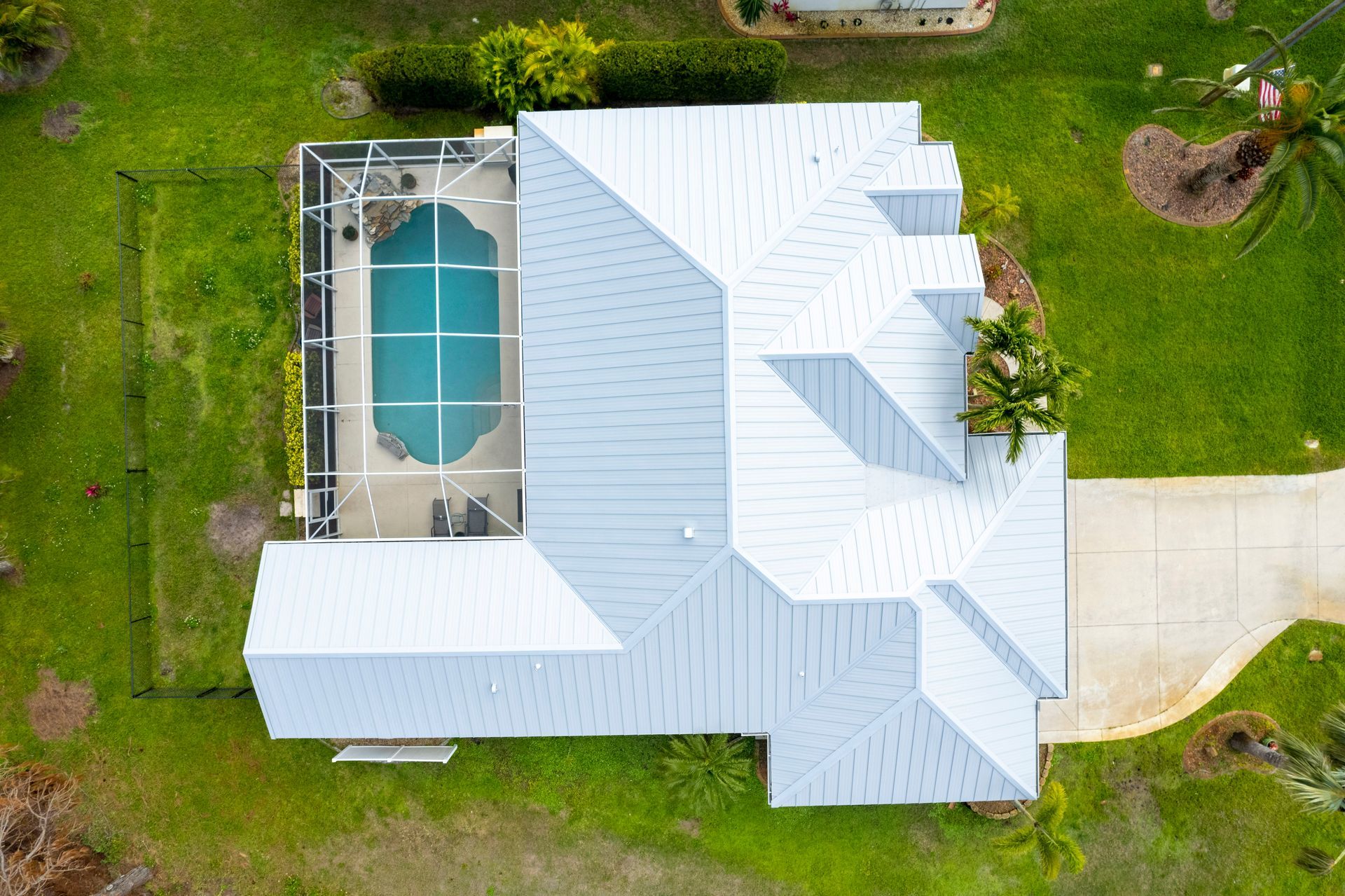Synthetic vs. Felt Underlayment: Choosing the Best Option for Sarasota Roofing
Understanding Roof Underlayment and Its Role in Sarasota’s Climate
Roof underlayment is a critical layer installed directly on the roof deck beneath shingles or tiles. Its primary purpose is to provide an additional barrier against moisture, wind-driven rain, and other environmental factors that could damage the structure of the home. Without proper underlayment, roofs are more vulnerable to leaks, mold growth, and structural decay. This protective layer ensures that even if the outer roofing materials are compromised, the home remains safeguarded.
In Sarasota, where the climate is characterized by intense heat, high humidity, and frequent storms, selecting the right underlayment becomes even more crucial. The region's susceptibility to hurricanes means that underlayment must withstand extreme weather conditions while maintaining its integrity. Additionally, prolonged exposure to UV rays and heavy rainfall can degrade certain materials, making it essential to choose an underlayment designed to perform well in these challenging circumstances. With this in mind, homeowners need to weigh their options carefully to ensure long-term protection.
What is Felt Underlayment?
Felt underlayment, often referred to as tar paper or asphalt-saturated felt, has been a staple in roofing systems for decades. It is made from organic materials like wood cellulose or fiberglass, which are saturated with asphalt to provide water resistance. Historically, felt was one of the first materials used due to its affordability and ease of installation. While not entirely waterproof, it offers basic protection against moisture infiltration when properly installed.
Asphalt felt remains a popular choice because of its cost-effectiveness and familiarity among contractors. Its traditional use has earned it a reputation as a reliable option for many roofing projects. However, despite its widespread adoption, felt does have limitations, particularly in areas prone to severe weather. As we explore further, it will become clear how modern alternatives stack up against this tried-and-true material.
What is Synthetic Underlayment?
Synthetic underlayment represents a newer generation of roofing materials, crafted from advanced polymers such as polypropylene and polyethylene. These materials are engineered to outperform traditional felt in several key areas. Unlike felt, synthetic underlayment is lightweight yet incredibly strong, offering superior tear resistance and durability. It also provides excellent protection against moisture, UV rays, and temperature fluctuations, making it ideal for demanding climates like Sarasota’s.
One of the standout features of synthetic underlayment is its ability to remain exposed to the elements for extended periods without degrading. This UV resistance is particularly beneficial during construction delays or unexpected weather events. Additionally, its smooth surface reduces the risk of wrinkles, ensuring a clean finish beneath the final roofing material. These attributes make synthetic underlayment a compelling option for homeowners seeking enhanced performance and longevity.
Performance in Sarasota’s Weather Conditions
When comparing felt and synthetic underlayment, their performance in Sarasota’s harsh weather conditions reveals significant differences. Felt tends to absorb moisture over time, especially in humid environments, which can lead to sagging, wrinkling, and even mold growth. In contrast, synthetic underlayment repels water effectively, maintaining its shape and functionality even after prolonged exposure to rain and humidity. This distinction is critical for preventing costly repairs down the line.
Hurricane-force winds pose another challenge for underlayment materials. Synthetic options excel here due to their exceptional tear strength and ability to stay securely fastened during storms. On the other hand, felt is more prone to tearing, potentially leaving the roof vulnerable during high-wind events. Furthermore, delays in installation can expose felt to the elements, causing it to deteriorate quickly, whereas synthetic underlayment remains intact for weeks or even months.
Mold and fungal resistance is another area where synthetic underlayment shines. In Sarasota’s humid climate, felt’s tendency to retain moisture creates an environment conducive to mold growth. Synthetic materials, however, resist mold and mildew, preserving both the roof’s structural integrity and indoor air quality. Additionally, synthetic underlayment performs better in cold snaps, avoiding brittleness that can plague felt. These advantages make it a clear front-runner for Sarasota homeowners prioritizing resilience.
Installation: Steps, Speed, and Safety
The installation process for felt and synthetic underlayment differs significantly, impacting both labor requirements and safety considerations. Felt typically comes in smaller rolls, requiring more effort and time to cover the same area compared to synthetic underlayment, which is available in larger, lighter rolls. This difference translates to faster installation times for synthetic, reducing labor costs and minimizing the risk of accidents on the job site.
Synthetic underlayment’s wrinkle-resistant surface also contributes to a smoother installation process. Contractors appreciate its ease of handling, which allows for greater precision and efficiency. Moreover, its slip-resistant properties enhance worker safety, particularly on steep roofs. While felt remains a viable option for those working within tight budgets, synthetic underlayment’s practical benefits often sway contractor preferences, especially in regions like Sarasota where performance matters most.
Cost Analysis: Short-Term vs. Long-Term Value
When evaluating costs, felt underlayment presents a more economical upfront option compared to synthetic alternatives. For homeowners looking to minimize immediate expenses, felt’s lower price point makes it an attractive choice. However, it’s important to consider the broader financial implications beyond the initial investment. Synthetic underlayment may carry a higher sticker price, but its long-term value often justifies the added expense.
One of the key ways synthetic underlayment saves money is through reduced labor costs. Its larger roll sizes and lighter weight streamline the installation process, cutting down on hours spent on the roof. Additionally, synthetic materials’ superior durability can decrease the likelihood of repairs caused by leaks or wind damage, further lowering maintenance expenses. Some insurance providers even offer discounts for homes equipped with high-performance underlayment, adding another layer of savings.
Over time, synthetic underlayment proves to be more cost-effective due to its extended lifespan and minimal maintenance needs. While felt may require replacement sooner , synthetic options maintain their integrity for decades, providing consistent protection year after year. Homeowners should weigh these factors carefully, recognizing that investing in quality now can prevent costly headaches later.
Building Codes and Warranty Considerations in Sarasota
Florida building codes impose strict regulations on roofing materials, including underlayment, to ensure structures can withstand the state’s volatile weather patterns. In Sarasota, compliance with ASTM standards is mandatory, dictating specific requirements for thickness, water resistance, and fire ratings. Certified synthetic underlayments often meet or exceed these standards, making them a preferred choice for new constructions and re-roofing projects alike.
Another important consideration is how underlayment choices affect manufacturer warranties. Many roofing manufacturers stipulate the use of certain underlayment types to validate warranty coverage. Synthetic underlayment frequently aligns with these requirements, offering peace of mind to homeowners who want to maximize their warranty benefits. On the other hand, using non-compliant materials like low-grade felt could void the warranty, leaving homeowners unprotected in case of issues. Understanding these nuances is essential for making informed decisions about your roof.
Pros and Cons: Synthetic vs. Felt Underlayment
Both synthetic and felt underlayment have distinct advantages and disadvantages, particularly when considering Sarasota’s unique climate. Synthetic underlayment excels in durability, moisture resistance, and ease of installation, making it ideal for hurricane-prone areas. However, its higher upfront cost may deter some budget-conscious homeowners. Conversely, felt underlayment offers affordability and familiarity but falls short in terms of longevity and performance in extreme weather.
To summarize, synthetic underlayment boasts superior weather resistance, UV stability, and mold prevention, while felt provides a cost-effective solution with adequate basic protection. Ultimately, the decision hinges on priorities such as budget, climate resilience, and long-term value. Sarasota homeowners must balance these factors to determine which option best suits their needs.
Common Issues and Vulnerabilities
Despite their differences, both synthetic and felt underlayment come with potential vulnerabilities that homeowners should understand. Felt is prone to moisture absorption, leading to issues like wicking and mold growth. Over time, this can compromise its effectiveness, especially in humid climates like Sarasota’s. Additionally, felt’s susceptibility to tearing under stress makes it less reliable during storms or high winds.
Synthetic underlayment, while highly durable, isn’t entirely immune to problems. Improper installation or incompatible roofing materials can diminish its performance. For example, synthetic underlayment requires careful adherence to manufacturer guidelines to avoid voiding warranties. By understanding these limitations, homeowners can take proactive steps to mitigate risks and select the most suitable underlayment for their specific situation.
Environmental Impact
When considering sustainability, synthetic underlayment generally holds an edge over felt due to its longer lifespan and recyclability. Made from engineered polymers, synthetic materials reduce waste by lasting significantly longer than traditional felt. In contrast, felt relies on natural resources and is less environmentally friendly once discarded. Homeowners concerned about their ecological footprint may find synthetic underlayment aligns better with green building practices.
Choosing the Right Underlayment: Factors to Consider
Selecting the best underlayment involves evaluating multiple factors, including climate, roof type, budget, and contractor recommendations. Sarasota’s tropical climate demands a material capable of withstanding heat, humidity, and storms, making synthetic underlayment a logical choice for many. However, budget constraints might steer some toward felt, particularly for simpler projects or temporary solutions. Consulting with experienced contractors can help clarify which option aligns with your goals.
Ultimately, homeowners should prioritize long-term value and peace of mind when deciding between synthetic and felt underlayment. Considerations like warranty coverage, installation timeline, and compatibility with existing roofing materials all play a role in this decision. By taking a holistic approach, you can ensure your roof remains protected for years to come, regardless of Sarasota’s unpredictable weather.
FAQ: Synthetic vs. Felt Underlayment for Sarasota Roofs
Which underlayment stands up better to hurricane-force winds?
Synthetic underlayment is far superior in resisting hurricane-force winds due to its exceptional tear strength and secure adhesion. Unlike felt, which can rip easily during storms, synthetic materials maintain their integrity, providing reliable protection for Sarasota homes.
How long can underlayment stay exposed before shingles are installed?
Synthetic underlayment can remain exposed for weeks or even months without degrading, thanks to its UV resistance. Felt, on the other hand, has a much shorter exposure lifespan and can begin to deteriorate within days, highlighting another advantage of synthetic options.
Is synthetic underlayment compatible with all roofing materials?
While synthetic underlayment works with most roofing materials, always check manufacturer specifications to ensure compatibility. Some manufacturers require specific underlayment types to uphold warranty agreements, so verifying these details is crucial before installation.
Does felt underlayment provide adequate moisture protection in humid climates?
Felt underlayment struggles in humid climates like Sarasota’s, as it absorbs moisture and can promote mold growth. Its tendency to wrinkle and lose shape further compromises its effectiveness, making synthetic underlayment a more reliable choice for moisture protection.
Are there code requirements in Sarasota for underlayment type or installation?
Yes, Sarasota adheres to Florida building codes that mandate certified underlayment meeting ASTM standards. Both synthetic and felt options must comply with these regulations, though synthetic underlayment often meets or exceeds them more readily.
Conclusion
Choosing between synthetic and felt underlayment involves weighing various factors, from climate resilience to cost and regulatory compliance. For Sarasota homeowners, synthetic underlayment emerges as the superior option due to its unmatched durability, moisture resistance, and ability to withstand hurricane-force winds. Although felt remains a budget-friendly alternative, its limitations in harsh climates make it less ideal for long-term protection.
If you’re unsure which underlayment is right for your Sarasota roof, consulting a local roofing expert is the best course of action. They can assess your specific needs and recommend the optimal solution based on your home’s unique characteristics. Remember, investing in quality underlayment today can save you from costly repairs tomorrow, ensuring your roof remains a steadfast shield against Sarasota’s challenging weather.
Have any questionS?
Reach out to our roofing specialists for more answers on the various options for your home.



